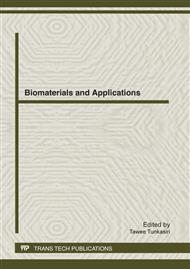p.579
p.583
p.587
p.591
p.595
p.599
p.603
p.607
p.611
Prediction Models for Moisture Sorption Isotherms of Soy Protein Isolate/Carboxymethyl Chitosan/Oleic Acid Blend Films
Abstract:
Soy protein isolate/carboxymethyl chitosan/oleic acid (SPI/CMCH/O) blend films were prepared by solution casting. The effect of various oleic acid content (0, 2.5, 5.0, 10.0, 20.0 pph of SPI and CMCH) on water sorption isotherm of SPI/CMCH base film was investigated. The sorption isotherm of SPI/CMCH/O blend films was evaluated at serveral relative humidity (0, 16, 35, 55 and 76% RH), at 25±1°C. The isotherms showed equilibrium moisture content (%EMC) of SPI/CMCH/O blend films decreased when oleic acid content increased. Understanding of sorption isotherms is an importance for prediction of moisture sorption properties of films via moisture sorption empirical models. Guggenheim-Anderson-de Boer (GAB), BrunauerEmmettTeller (BET) and Oswin sorption models were tested to fit the experimental data. The root mean squares (RMS) of GAB, BET and Oswin were in the range of 68.60-87.02, 22.86-79.38 and 694.78-3797.23, respectively. BET model was found to be the better-fitted model for SPI/CMCH/O blend films at 25±1°C.
Info:
Periodical:
Pages:
595-598
Citation:
Online since:
April 2012
Authors:
Keywords:
Price:
Сopyright:
© 2012 Trans Tech Publications Ltd. All Rights Reserved
Share:
Citation:


